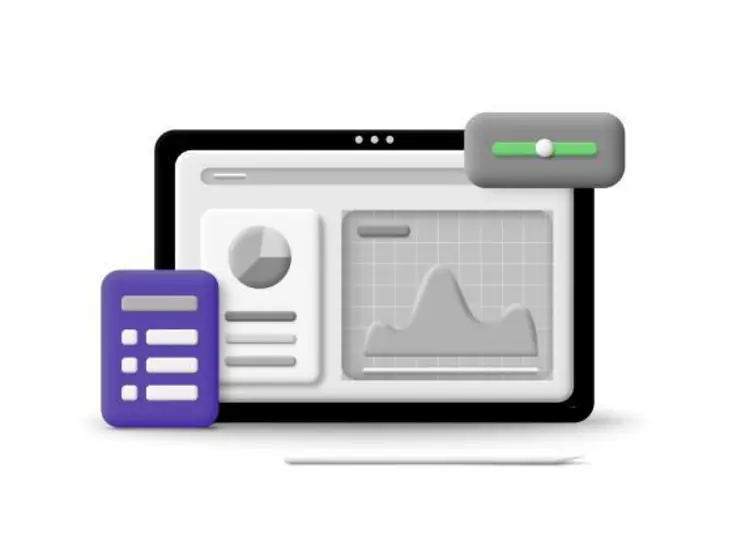How Do You Monitor Prices?
In today’s dynamic business landscape, the capacity to conduct precise price monitoring has become an indispensable factor for achieving success. Proficient price monitoring empowers enterprises to navigate shifting market dynamics, elevate customer contentment, and base decisions on data-driven insights.
Within the confines of this all-encompassing article, we embark on an exploration of the sphere of price monitoring, uncovering its significance, strategies, tools, and best practices that can furnish your business with a distinct competitive advantage.
Unveiling the Significance of Price Monitoring
Price monitoring entails the methodical practice of observing and scrutinizing the prices of products or services within a given market. Its pivotal role in contemporary business strategies cannot be emphasized enough. Through diligent price monitoring, businesses can:
- Sustain Competitiveness: By staying attuned to competitors’ pricing strategies, businesses can make timely adjustments to their own pricing to maintain a competitive edge.
- Optimize Profitability: Price monitoring unveils pricing opportunities that enable products or services to be positioned for maximal profitability.
- Elevate Customer Satisfaction: Aligning pricing with customer expectations fosters increased satisfaction and loyalty among customers.
- Adapt to Market Dynamics: In the ever-changing landscape of the market, price monitoring furnishes businesses with the insights required to adapt to shifting demand, supply, and evolving customer preferences.
Building a Robust Price Monitoring Framework
To initiate a proficient price monitoring initiative, businesses should put in place a comprehensive framework:
- Define Objectives: Begin by meticulously outlining the goals and objectives of your price monitoring endeavors. Clearly articulate what you intend to accomplish through the process of price tracking.
- Identify Data Sources: Next, ascertain the data sources essential for effective price monitoring. These sources may encompass internal data, competitor data, and market data.
- Determine Monitoring Frequency: Establish the frequency with which you intend to conduct price monitoring. Consistent and regular monitoring is key to staying well-informed about the ever-changing dynamics of the market.
Data Collection and Analysis
Effective price monitoring hinges on robust data collection and analysis:
- Data Sources: Gather pricing data from various sources, including internal records, competitor websites, industry reports, and price comparison websites.
- Data Analysis: Leverage data analysis techniques to extract meaningful insights from the collected data. Identify trends, outliers, and areas for improvement.
- Technology and Automation: Employ technology and automation tools to streamline data collection and analysis, making the process more efficient and accurate.
Competitor Price Tracking
Competitor price tracking is an essential aspect of price monitoring:
- Identify Key Competitors: Determine your primary competitors in the market and focus your tracking efforts on them.
- Monitoring Tools: Utilize specialized competitor tracking tools and software to closely monitor competitors’ pricing strategies.
- Analysis and Response: Analyze competitor pricing data to identify patterns and trends. Adjust your pricing strategies in response to competitive moves.
Harnessing Price Monitoring Tools and Software
Modern businesses have access to a plethora of price-monitoring tools and software solutions:
Data Scraping Tools: Utilize web scraping tools to efficiently extract pricing data from websites.
Real-Time Tracking: Invest in tools that provide real-time price tracking to stay updated with market changes.
Data Visualization: Leverage data visualization tools to create clear and actionable insights from pricing data.
Setting Up Price Alert Mechanisms
Price alerts and triggers are vital for proactive price monitoring:
Define Price Alerts: Establish specific criteria or thresholds that trigger alerts when prices deviate from the norm.
Real-Time Notifications: Configure alerts to provide real-time notifications to relevant stakeholders when price changes occur.
Embracing Dynamic Pricing Strategies
Dynamic pricing strategies involve adjusting prices based on real-time market data:
Understand Dynamic Pricing: Explore the concept of dynamic pricing, which involves changing prices in response to supply and demand fluctuations.
Automation: Implement automated dynamic pricing strategies using software that factors in variables like competitor prices, inventory levels, and historical sales data.
Incorporating Price Monitoring Best Practices
Effective price monitoring relies on best practices:
Data Accuracy: Ensure the accuracy of your pricing data by regularly verifying and updating sources.
Frequency: Consistently monitor prices to stay informed about market changes and competitor moves.
Competitor Analysis: Continuously analyze competitor pricing strategies to inform your own pricing decisions.
Customer Feedback: Incorporate customer feedback and preferences into your pricing strategies for improved customer satisfaction.
Leveraging Customer Feedback
Customer feedback can provide valuable insights into pricing decisions:
- Collect Customer Feedback: Solicit feedback through surveys, reviews, and direct customer interactions.
- Analyze Feedback: Analyze customer feedback to identify areas where pricing adjustments may be necessary to align with customer expectations.
- Adjust Pricing: Use customer insights to make informed pricing adjustments that resonate with your target audience
Addressing Price Violations and Enforcement
Price monitoring can help businesses address price violations:
Identify Violations: Use price monitoring to identify instances of price violations, such as price-fixing or price discrimination.
Legal and Ethical Considerations: Ensure that your price monitoring and enforcement practices align with legal and ethical standards.
Adapting to Market Changes
Price monitoring enables businesses to adapt to market shifts:
Market Intelligence: Stay informed about market dynamics, economic trends, and emerging customer preferences.
Agility: Develop strategies for quickly adapting to changing market conditions and customer expectations.
Real-Life Case Studies
Examine real-life case studies of businesses that have successfully implemented price monitoring strategies.
Analyze the outcomes and lessons learned from these cases to inform your own price monitoring efforts.
Conclusion
Price monitoring is an invaluable tool for businesses seeking to thrive in a dynamic market. By establishing a comprehensive framework, leveraging technology, and adopting best practices, businesses can enhance their competitiveness, optimize profitability, and respond effectively to evolving market conditions.







